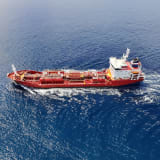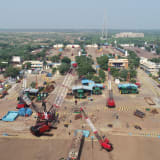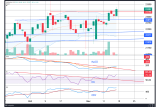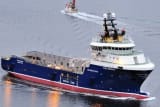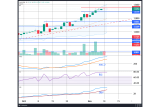Research
09/10/25
Chemicals Update—EPCA 2025: The Geography of Shifting Trade and Industrial Decline

This year’s annual gathering of the European Petrochemical Association (EPCA) took place between 22-25 September in the in the German capital, Berlin. And as has become customary by now, the event attracted also the chemical tanker shipping industry as well. This year’s event, however, was marked not just by the relatively good weather for this time of the year, but also by a major flight disruption across Western Europe due to cyber-attacks, labor strikes and drone sightings around several airports. As a result, many flights were delayed or cancelled, while some of those lucky enough to have reached more or less on time, found their checked-in luggage missing or sent in the wrong direction. The many flight delays and cancellations could be one of the reasons why this EPCA was – in the views of many – less attended than previous years. But even some major chemical producers had limited presence (people arriving for just a day or two) or skipped the conference entirely – perhaps due to budget cuts. And from this, one could sense the bearish note, especially among the chemical producers.
Chemical Producers
Currently, the European chemical industry is facing unprecedented challenges: soaring energy and production costs, a growing influx of cheaper imports from Asia, increasingly strict environmental regulations and, on top of all that, shifting US trade policy. Together, these pressures are eroding the competitiveness of local producers, with many now operating at negative margins and evaluating rationalisation programs.
In the last two years, Europe has experienced a wave of permanent site closures, in stark contrast to China’s ongoing announcements of new chemical complexes. In just the two weeks following the conference, three additional closures were announced in Europe: Trinseo’s MMA facility in Italy, Arlanxeo’s synthetic rubber plant in France and INEOS Inovyn’s site in Germany with additional announcements of job cuts at the Acetyls plant in the UK. It seems a chain reaction has begun. As crackers are phased out, downstream producers are struggling to build new supply chains and secure profitable raw material contracts. And while there’re still some new modern capacities coming online in 2027, similar site closure announcements are likely to continue in the near future and ultimately outweigh any new additions.
In such an unfavorable environment, it’s no surprise that those doing business in and with Europe were cautious and subdued. Few, if any, of the Berlin attendees among the producers expected demand to improve next year, largely due to the absence of clearly positive drivers.
Shipowners
In contrast to the producers, the shipping community was more upbeat about the market. Despite all the volatility and uncertainty, many of the shipowners are happy with their earnings this year. Ship earnings are still well above the long-term averages, despite a 20-25% drop from last year’s historically high levels. Part of the explanation for this is that the abrupt policy changes during this year have moved the market away from its equilibrium, making it overall far less efficient than before.
There are multiple instances where regional trade with locally available products has become unviable due to the trade tensions between the regional trade partners, and substitutes from halfway across the world are now being imported. For example, chemical products that Mexico used to import from the US before the tariff spat started, are now sourced from the Far East instead; or Canada is now buying more soybean oil from Brazil and not from the US. It is clear that such policy-driven inefficiencies are making some voyages longer and driving the ton-mile demand, despite somewhat lower trade volumes. Thus, the reconfiguration of trade flows due to changes in trade policy have brought not just anxiety, uncertainty and pain, but also new opportunities for trading houses and shipowners.
But the redirecting of cargo flows to locations that have insufficiently developed infrastructure to handle these increased volumes, has resulted in more port delays, adding tightness to the market.
Meanwhile, the distinction between supply and demand centers has become more pronounced and clearer, turning some regions into almost pure importers with hardly any exports. In practical terms, this means that chemical tankers have to ballast now more and longer distances to regions where cargo is more abundant. It has become a common practice to see regular ballasters from the West Coast of the Americas; Australia and New Zealand; the East and Central Med; Africa; EC India; and even from SE Asia, the Middle East and NW Europe. All this increases the total voyage costs and thus – the freight rates that charterers have to pay.
At the same time, MR earnings are holding remarkably well due to a variety of factors, with the end result being that the so-called “swing tonnage” has been mostly away from the chemical tanker market, which has been supportive for the chemical freight rates.
So, there have been plenty of reasons to keep the chemical tanker owners happy with this year’s market. But what about next year’s one?
The Shipping Sentiment for Next Year
As could be expected, the shipowners are full of optimism, even though it is of the cautious type. To get a feeling where the market is heading next year, here are some points to consider:
- To begin with, terminal and storage tanks operators from Europe are reporting they are fully booked for several months ahead on large volume of vessel arrivals. This makes sense, bearing in mind that Europe is more and more dependent on imports of base and commodity chemicals while its own chemical capacity is being gradually squeezed out of the market and reduced. The trend is expected to continue in the short- and medium term. So, the Europebound trade lanes may experience relatively high freight rates on this increased traffic but the backhaul market out of Europe will remain bad.
- As usual, the EPCA Conference marked the start of negotiations for next year’s contracts. This time, many market participants were reportedly shifting away from long-term contract volumes in favor of the spot market which is a clear sign that they expect the spot freight market to fall next year.
- The impact of the USTR port fees is widely expected to be the concentration of Chinese-owned tonnage in the trade East of Suez. This could cause a significant drop (up to 50%) in the freight rates from their current levels.
- If the above scenario materialises and over 300 ships which are 25 years old and older (total capacity exceeding 4m dwt), one could expect to see large(er)-scale scrapping next year.
- Many of the well-established shipowners have been steadily investing in fuel efficiency measures for their fleets while hedging their bets on alternative fuel types, with the double benefit of reducing bunker consumption and greenhouse emissions. Others have been aggressively taking on long-term charters newbuildings or ordered their ow, expected to be delivered in 2026-28. Such shipowners, with modern, more efficient, and environmentally compliant fleet may have a clear advantage in a weaker market.
In Conclusion
The discussions and market signals observed during EPCA 2025 underline a widening divergence between Europe’s chemical producers and the shipping segment. The European petrochemical industry remains under sustained structural pressure, facing elevated energy costs, regulatory constraints, and increasing competition from lower-cost regions. The combination of these factors continues to erode margins, accelerate rationalisation, and shift the global supply balance further toward Asia and the Middle East. Unless there is a significant change in regional energy policy or coordinated industrial support, further consolidation and site closures appear inevitable.
Conversely, the chemical tanker market is benefiting from these same structural shifts. Reconfigured trade flows, longer-haul voyages, and infrastructural inefficiencies are contributing to elevated freight rates and improved vessel utilisation, even amid softer cargo volumes. The sector’s near-term performance will depend on how these trade dynamics evolve alongside regulatory developments, such as USTR port fees and emissions-related requirements.
Looking ahead to 2026, the key differentiator across both industries will be adaptability. For producers, investment in sustainable feedstocks, circular processes, and energy diversification will be essential to restore competitiveness. For shipowners, continued focus on fleet efficiency, alternative fuels, and digitalisation will determine resilience in a potentially weaker freight environment.
Overall, EPCA 2025 highlighted that while the European chemical industry remains in a phase of contraction, logistics and shipping players are adjusting swiftly to the new trade geography. The coming year will test how effectively both sides can navigate this transition from cyclical downturn to structural transformation.
By Plamen Aleksandrov, Head of Research and Svitlana Synoha, Market Analyst, Chemicals, SSY.
Articles
You may also be
interested in
View allGet in touch
Contact us today to find out how our expert team can support your business








